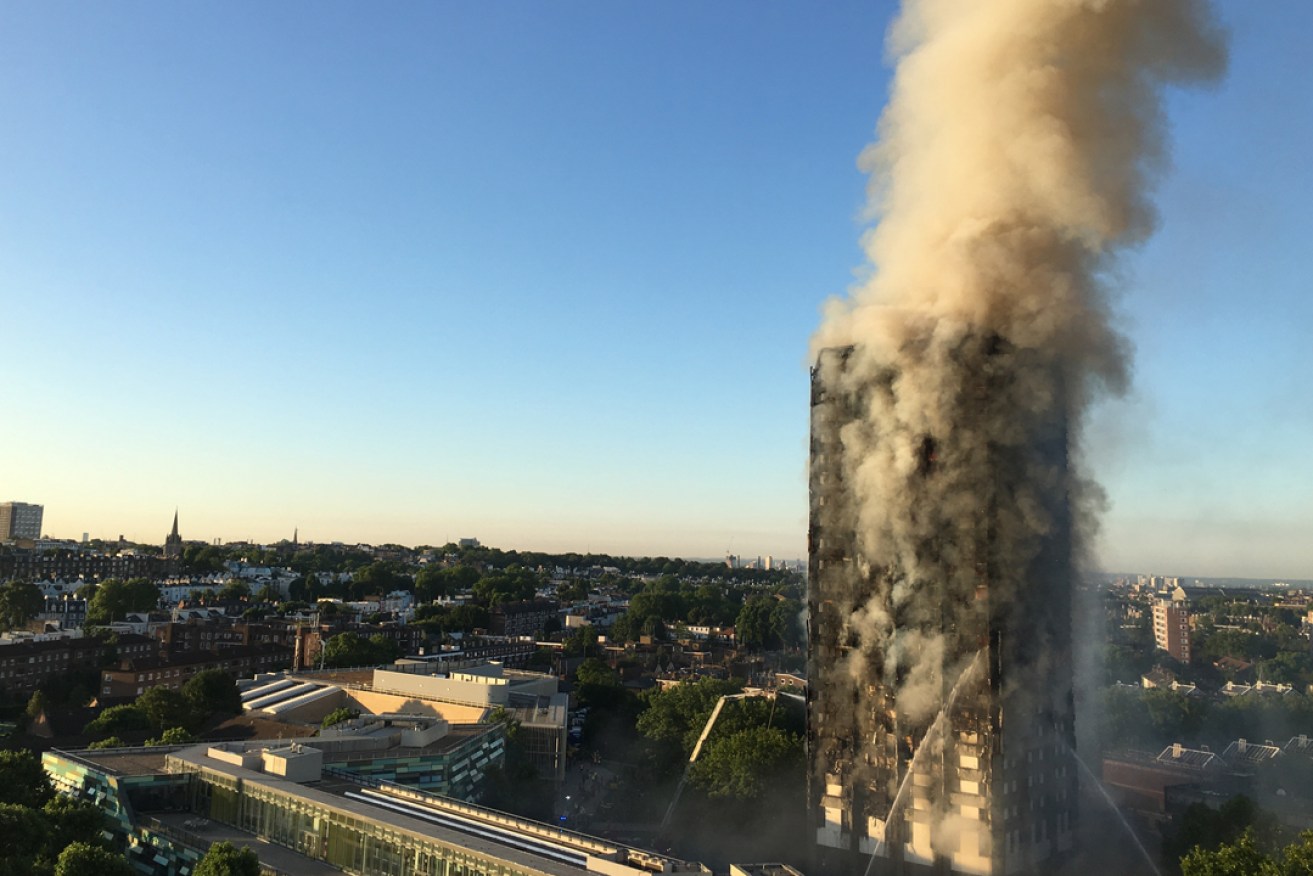Death toll from London inferno likely to rise
The death toll from the devastating tower block fire in west London is expected to rise as investigators trawl through the wreckage in the search for other victims.

Smoke billows from the fire that engulfed London's 24-storey Grenfell Tower in 2017. Photo: PA
At least 12 people have died after the huge fire destroyed Grenfell Tower in north Kensington, where flames could still be seen burning almost 24 hours after the blaze started early on Wednesday.
Prime Minister Theresa May has promised a “proper investigation” after the fire tore through the 24-storey building amid growing concerns about how it could have spread so rapidly.
Speaking in Downing Street, May said: “When it’s possible to identify the cause of this fire, then of course there will be proper investigation and if there are any lessons to be learnt they will be and action will be taken.”
Many people are unaccounted for and firefighters are continuing to tackle “pockets of fire”, with the operation now in the “recovery phase”.
Commander Stuart Cundy of the Metropolitan Police said: “This is going to be a long and complex recovery operation and I do anticipate that the number of fatalities will sadly increase beyond those 12.”
Residents’ groups have claimed they voiced concerns about the safety of the building, which had been recently refurbished, while those who escaped complained their fire alarms had not been set off by the blaze.
Policing and Fire minister Nick Hurd said emergency checks would be carried out on tower blocks undergoing similar renovations.
Grenfell Tower, built in 1974, was refurbished at a cost of STG8.7 million ($A14.6 million), with work completed in May 2016.
Kensington and Chelsea Council admitted it had received complaints over the works after an action group said its warnings about safety had fallen on deaf ears.
A blog post from Grenfell Action Group in November said “only a catastrophic event” would expose residents’ concerns.
The group said there was one entry and exit to the tower during improvement works and it had issues with evacuation procedures.
Concerns had also been raised about exposed gas pipes weeks before the blaze.
Rydon Group, which that carried out the refurbishment, said the project “met all required building regulations”.
But a line stating the project had met all “fire regulation and health and safety standards”, which was included in an earlier release, had disappeared.
Witnesses described hearing screams for help from people trapped on the upper floors of the block as flames engulfed the building, which contains 120 flats thought to be home to between 400 and 600 people.
Children and a baby were seen being thrown out of the windows to be caught by emergency workers and members of the public below.
“We could see a lot of children and parents screaming for ‘Help! Help! Help!’ and putting their hands on the window and asking to help them,” Amina Sharif told Reuters.
Another witness, Saimar Lleshi, saw people tying together sheets to try to escape.
London Fire Brigade said it had rescued 65 people as flames engulfed the block and had managed to reach all 24 floors, though a full search of the building had not been completed.
NHS England said 74 patients were treated in six hospitals across London, including 18 who are in critical care.
In the wake of the deadly blaze, Australian authorities have been told an audit of high-rise buildings with cladding is needed to ensure the material is fire-retardant.
“We need to have an audit of all high-rise buildings which have cladding to ensure that it’s fire-retardant, meets Australian standards or if it’s not, it needs to be removed.” independent senator Nick Xenophon told Sky News today.
A Senate committee has been investigating the use of non-conforming building materials and is due to finalise a report by October.
“But so far the evidence we have got is very disturbing,” Senator Xenophon said.
“Firefighters say this external cladding is flammable, non-conforming; stuff that shouldn’t be on buildings and poses an enormous risk on residents and to firefighters.”
Other building products were being imported to Australia that did not conform with local standards, the senator said.
Thousands of kilometres of electrical cables already have been recalled and banned from the market by the Australian Competition and Consumer Commission.
“There are 22,000 homes in this country where this is a potential risk of fire or electrocution because of defective cables,” Senator Xenophon said.
-PA/AAP




